Utilizing Beech Forests for Firewood and Charcoal in Villages in Heavy Snowfall Areas -Efforts of the Snow Beach Project-
Author: Tomohiko Kamiya (Professor Emeritus, Niigata University/Sponsor of the Snow Beach Project)
*This article is reprinted with permission of Professor Kamiya's contribution to the Ibaraki Nature Museum.
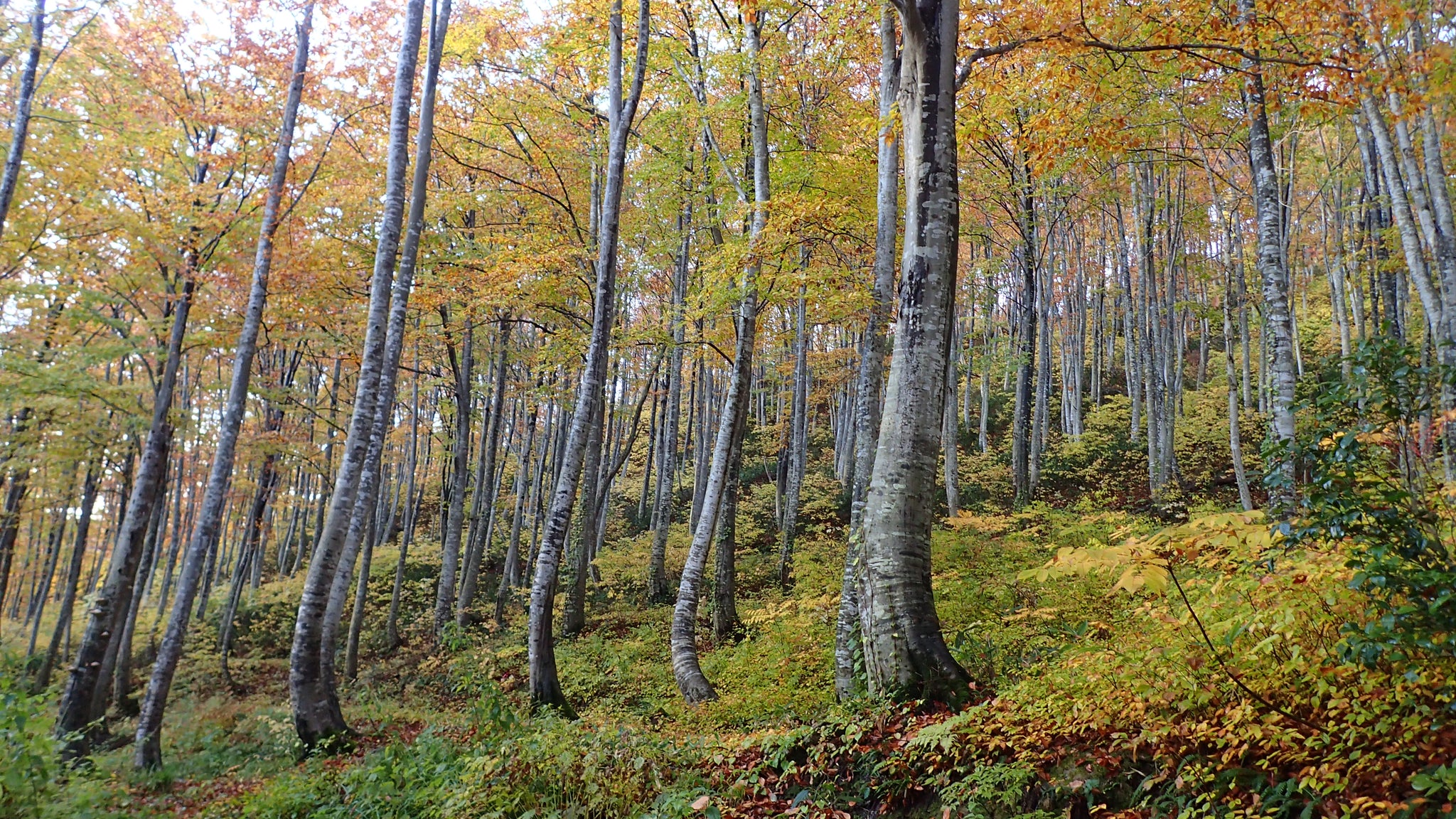
↑Beech charcoal beech forest in a heavy snowfall area (Oshirakawa, Uonuma City)
・Beech and charcoal beech forests in heavy snowfall areas
Broadleaf forests spread along with cedar forests around the villages in heavy snowfall areas. Beech trees grow in the broad-leaved forest as you move further into the mountains from the village. In the past, in the beech forests that stretched deep into the mountains, firewood was cut during the remaining snow season, and charcoal was burned in kilns built on the slopes during the snowless season. Until half a century ago, beech forests were sustainably used as fuelwood forests for livelihoods, and were an important resource for village economies. After the switch from firewood and charcoal to fossil fuels such as gas and oil, the coppice forests were no longer used.
Currently, most of the beech furniture manufactured and sold by major furniture manufacturers is made from beech wood imported from Europe. In Japan's heavy snowfall areas, beech forests that were once fuel wood forests are spreading, but they are hardly used. Because the distribution of beech forests in the Japanese archipelago is very similar to the snowfall distribution, beech trees are adapted to heavy snowfall. Beech trees, which have hard timber, grow straight with little root bending, so they have a good yield when used as timber.
・Thinning of beech forests for firewood and charcoal, and utilizing the thinned wood
Many such unused fuelwood and charcoal beech forests remain in villages in mountainous areas with heavy snowfall, where the population is aging and declining. In order to revive beech forests, which once supported the economy of villages, as forests for livelihoods, it is necessary to nurture them so that they can be used for furniture, etc., like European beech trees.
For that reason, we reduce the number of trees that are too many and increase the branches and leaves of the remaining trees to thicken the trunk. This is the same cultivation method as thinning in planted cedar forests, but in charcoal beech forests, it is necessary to cut more thinned trees than in cedar forests. Coniferous trees have a triangular pyramidal shape and easily receive light from the surroundings, but broadleaf trees fill the sky of the forest in close proximity, so it is necessary to secure a wide space where the branches and leaves can spread out.
Thinning leaves trees with straight trunks and little root bending. When such a tree grows smoothly, it is easy to use it for furniture materials. On the other hand, thinned trees cannot be used as timber because they are thin, but they are effective as fuel for wood stoves and for mushroom cultivation. The Yukiguni Forest Association in Oshima Ward, Joetsu City processes thinned beech trees into sawdust for cultivating nameko mushroom beds.
By thinning the charcoal beech forest, a lot of light enters the forest. Young beech trees, which had endured little light until then, began to grow vigorously. In the future, some of them will grow into the next generation of beech trees that will cover the forest sky.
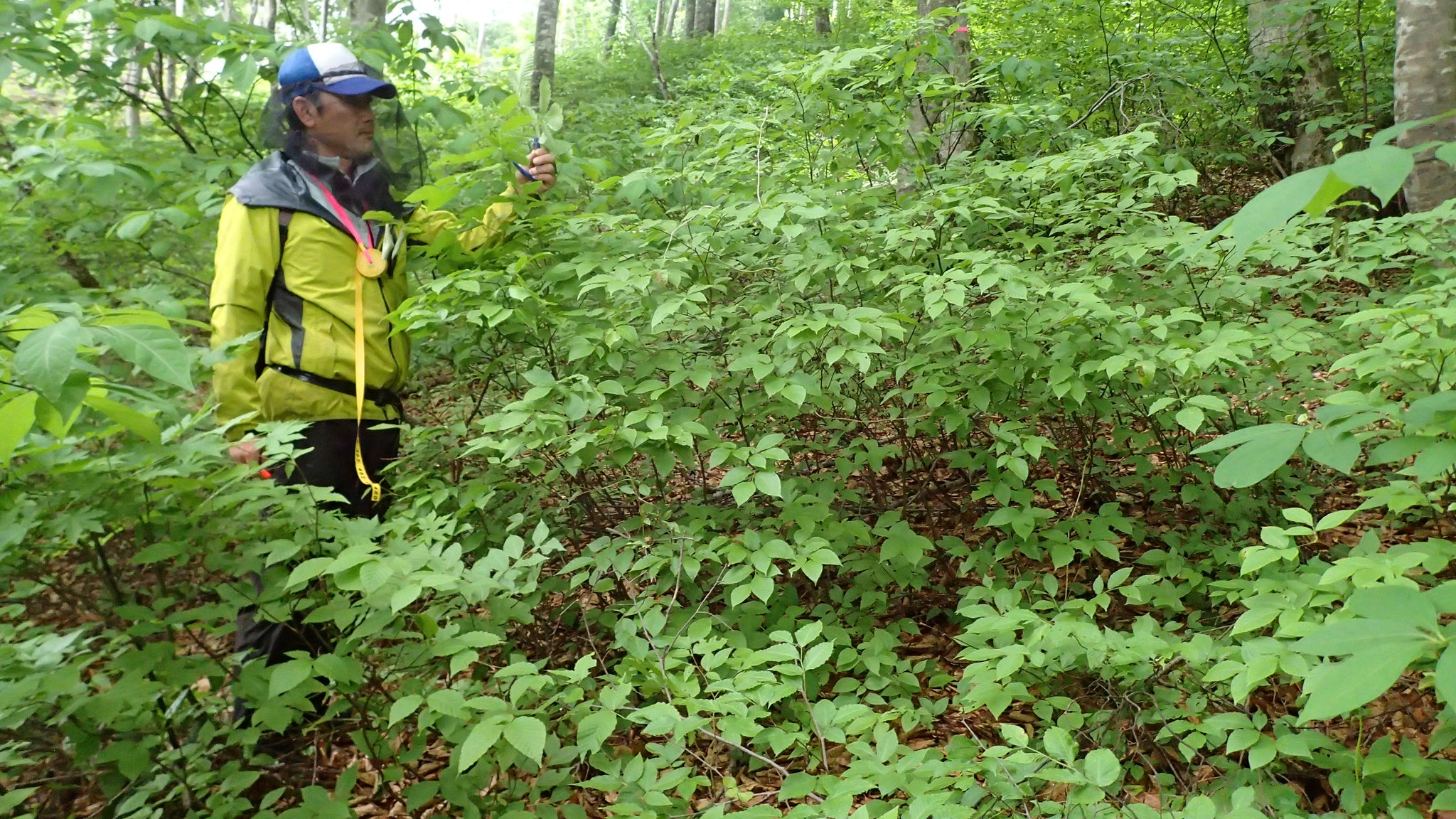
↑ Young beech trees growing in a thinned beech forest
・Logging methods that lead to forests with high biodiversity
In the virgin forest, thick trees, thin trees, standing dead trees and fallen trees spread like a mosaic pattern. It is known that the gaps left behind by fallen trees are home to a wide variety of plants, insects and small animals, and are known for their high biodiversity. However, since the size of the beech trees in the coppice forest does not vary much over a wide area, groups of branches and leaves of the same size cover the sky. As a result, it is difficult for direct sunlight to enter forests, and a diverse range of living things cannot live in forests as they do in virgin forests.
Since 1973, 47 years ago in the Oshirakawa district of Uonuma City, the old charcoal beech forest has been thinned two or three times. Since 2017, we have been cutting small plots (400 to 1,000 square meters) of the Oshirakawa district mountain god beech forest, mainly trees with a diameter of 50 to 80 centimeters, like gaps in the primeval forest. . As a condition for felling, in principle, the beech trees of the next generation have already grown sufficiently. The cutting of adjacent parcels is to be done at intervals of 10 years or more.
By repeating this cyclically, we aim to create a forest that can sustainably harvest in a 100-year cycle while leading to a mosaic-patterned forest with excellent biodiversity like a virgin forest.
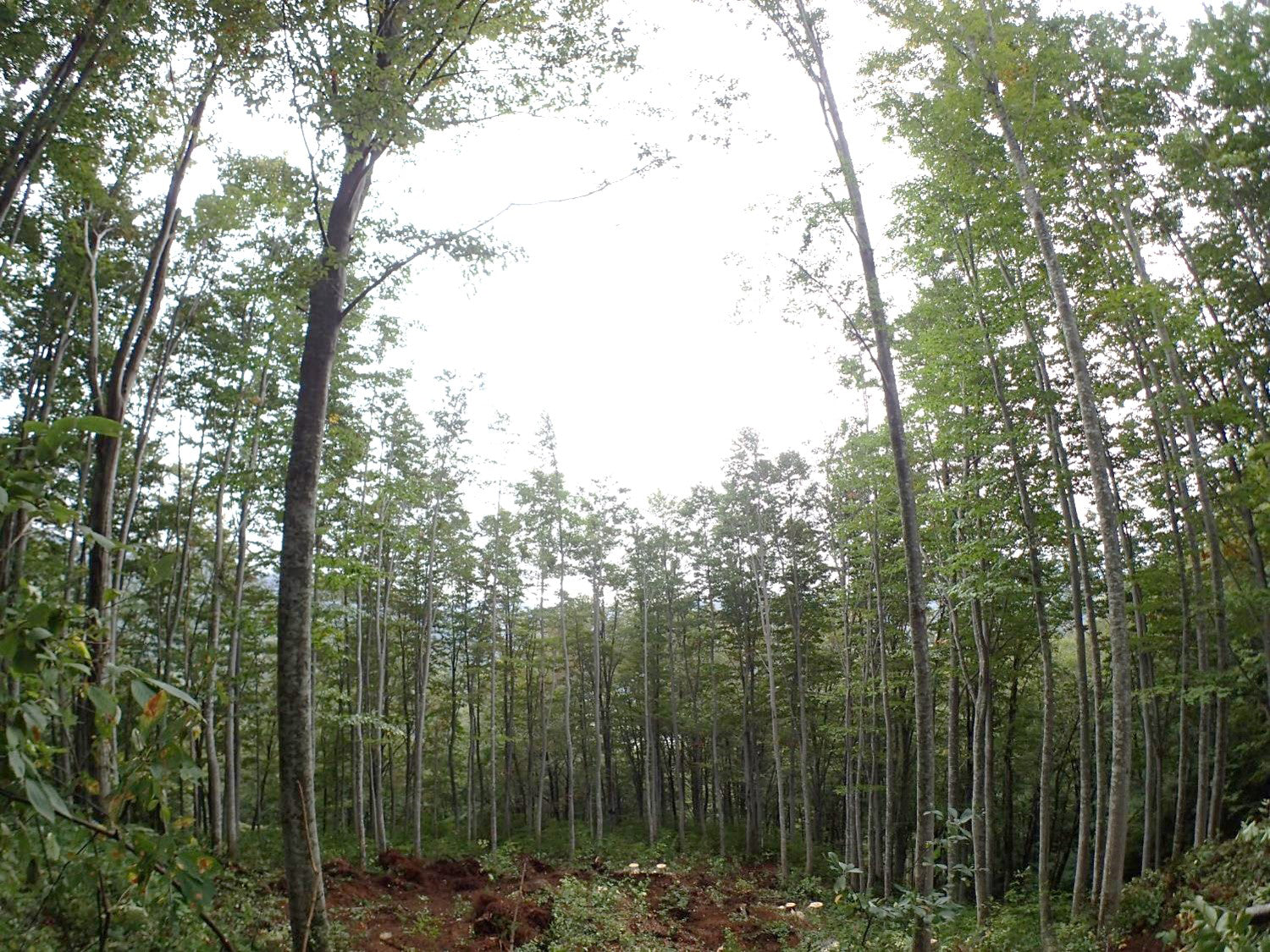
↑ Gap after being harvested in parcel felling
Beech felled in small plots is transported to the sawmill. At the sawmill, it becomes a board that is easy to use for furniture. Many of the processed beech boards had holes caused by longhorn beetle larvae and discoloration caused by fungi. Most of the holes are caused by mulberry beetles, which spend their larval stage in beech trees.
・Snow beach aiming to revitalize a heavy snowfall area with ecologically designed beech trees
When beech wood harvested from coppice forests is used for furniture, the use of such damaged wood is unavoidable. Rather, it is the damaged wood that symbolizes the ecology of the beech forest, where longhorn beetles and woodpeckers that feed on their larvae live. I decided to name such damaged wood as nature-created ecological design, emphasizing that it is a more natural beech wood.
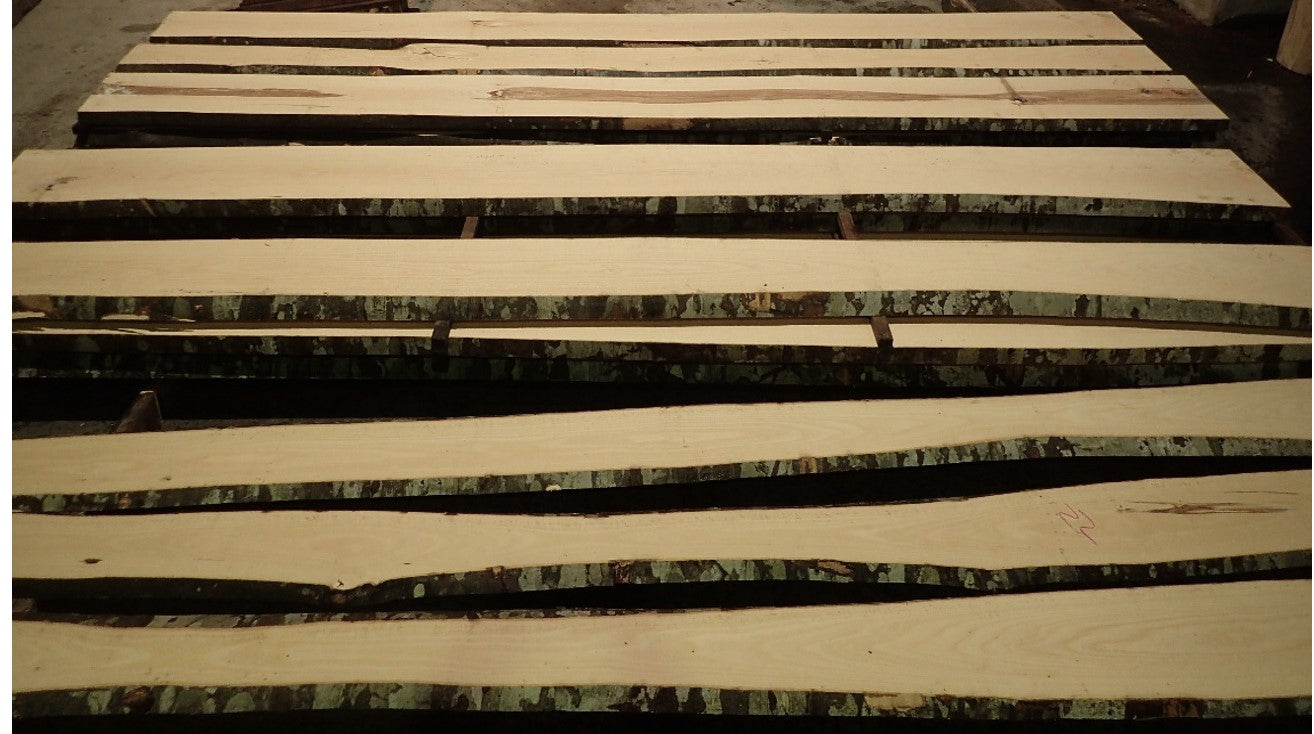
↑ Normal beech wood with beautiful white grain (with bark)

↑ Beech wood from Ecological Design
Beech wood with an “ecological design” born from the ecosystem, including normal wood, is processed into desks and large tables, and is also used in many unique waiting rooms at JR Niigata Station. Ecologically designed laminated lumber was used for the seat surface of the excellently designed chair. We have also created a number of unique products for home interiors, such as entrance doors and kitchen counters. The Tokyo Toy Museum also has products made from this beech tree. Various wooden products such as nameplates, wall clocks, and coasters were also made. Thin bentwood beech lamps have won national and international awards.
We held regular study meetings and exchanged opinions with everyone who participated in the efforts to utilize the beech forests of the villages introduced here. Those involved in the use of ecological design boards visit the site, participate in surveys and forestry work, and support activities to utilize the former charcoal beech forest.
The beech tree cut out from such efforts was named "Snow Beach". Snow Beach is based on the assumption that saplings that have been encouraged to grow by thinning will change generations by thinning a small area. In 100 years from now, a beech forest with a structure resembling a virgin forest with excellent biodiversity will be established, from which the next generation of beech trees will be harvested.
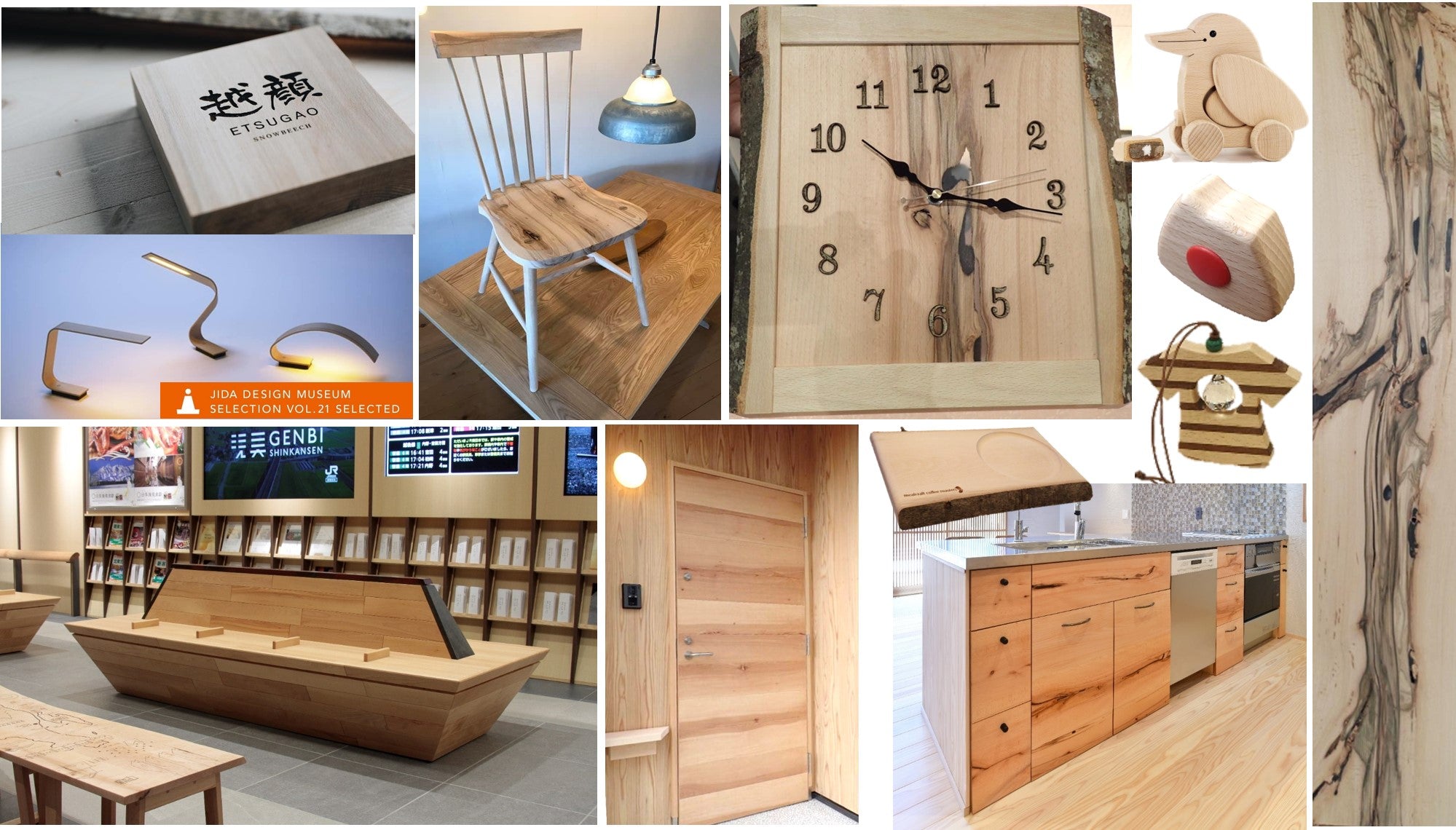
↑ Various beech products produced by the Snow Beach Project
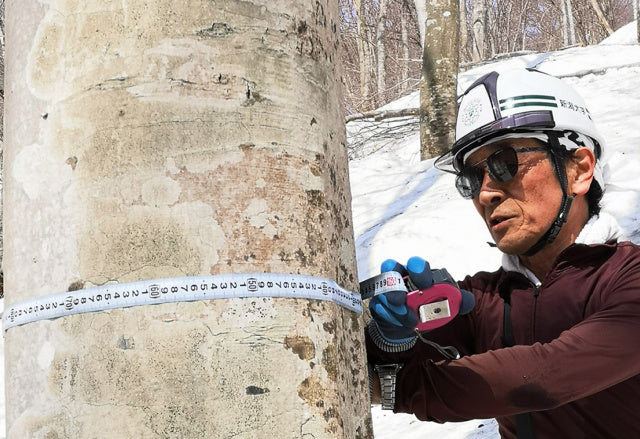
↑ Recent photo of the author: Tomohiko Kamiya (Professor Emeritus, Niigata University/Sponsor of the Snow Beach Project)
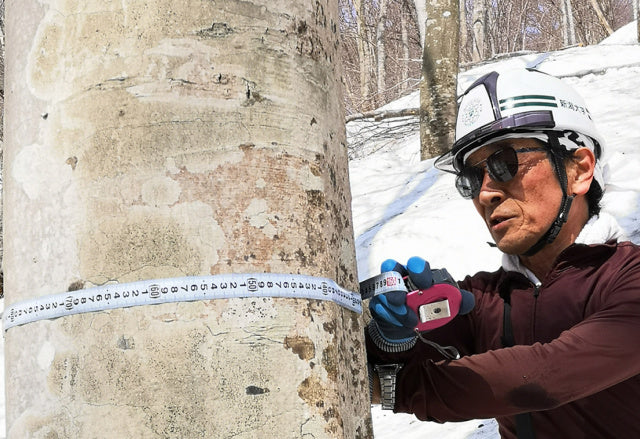
2 comments
ストーリオ木村です。先日はご馳走様でした。
浅草山荘のランチ、お肉がとても美味しかったです!
雪上間伐、ぜひご参加ください。日程決まりましたら、メールさせて頂きます。
山の神でお会いするのを楽しみにしております。
今後ともよろしくお願いいたします。
スノービーチプロジェクトに参加したいです。2023年の3月の見学会の時、娘の出産トラブル
で参加できずに今は浅草山荘の総支配人で、みなさまの食事を提供しています。次の見学会には是非参加させて下さい。よろしくお願いします。